Book Review: The Art of GD
The Art of Game Design: A Book of Lenses
Author: Jesse Schell
Publisher: Morgan Kaufmann
Paperback: 512 pages
As I said in my last post here in Life at VFS, the school recommended some books to read to be prepared for classes and for our work in the Game area. So I decided to start my first Book Review with one of these recommended books. It’s hard for me to review a book, as I have never done this before, so I hope I can explain well what I’m trying to express here, ok?
How to teach about Game Design if this is an enormous subject, without beginning or end, and totally non-linear? There isn’t one simple and correct way to teach how to create a great game. You can’t just say “do this” and everything is going to work well, since games involve a lot of characteristics from a lot of things. It seems like a movie, with images and story from behind, it seems like a book with some amazing narrative, but also is playable, is interactive, and changes with every choice of the player. But the hardest part of it is understanding what the player really likes and searches for, to have pleasure with this final product. Is too hard to just find the perfect recipe for success that will work for all tastes of all players. That’s why a lot of books that try to teach about Game Design most of time don’t have it completed successfully.
Jesse Schell is a Game Design Professor at Carnegie Mellon University and Executive Director of Schell Games – the biggest video game studio of Pittsburgh – with The Art of the Game Design, he shows that the technics to create a good game are around us every time, in every moment of our lives. He knew how to teach us in a non-tiring way, and with an amazing writing, the best fundaments that we need to know to formulate a powerful game for all tastes.
Wait! What the book is really about?
First of all, this isn’t a book of Game Development. The author will not teach you about art, 3D modelling, programming or anything like that. All the writing is focused on Game Design: its mechanics, technics, iterating etc. And this is the best differential of the book, comparing to others with the same subject.
On one hand we will see from the beginning a single map which transforms with every chapter until there is a complete map with new concepts and techniques. With this you can learn and create your own game following this information. This map allows you to understand better how Game Design is divided and how you can use it well. Even when it seems too hard to understand, the book explains clearly every step by every chapter.
And on the other hand – and not less important – the book presents a series of what the author calls of “lenses”, or questions, that you can use in your game, or what you can ask about your game design, to see if you are correctly following the way of production. These lenses were very well studied and created with amazing concepts and techniques that even new Game Designers can understand easily and start to use it on their own games.
The book starts with the basics concepts of Game Design, with the main examples – mostly with traditional board games – and then teaching about game mechanics, interface, puzzles etc.
It’s normal to see the author citing moments of his life in which he used as an example to all his next creations, proving again that the game design is present everywhere. And exactly because the book is so transparent as well, we can feel that every moment is like you are having a dialogue with the author. It is interesting how the reading and accompanying of the book is simple and easy to understand, despite being so dense and with such complicated matters – especially in the chapters about the mechanics and interface.
The 100 Lenses
During all pages of the book we will learn 100 different Lenses, also know as 100 sets of questions that will help you improve your game. The more interest is that these lenses are collected from so diverse fields as architecture, music, psychology, film, anthropology, etc.
It’s amazing how the author decides to teach us with a deck of cards. For us as players, what is best then one organized “game”, with illustrations, informations and very well content? The “players” can buy the Deck of Lenses on the author website, or download the app for Android, iPhone, iPod or iPad, reading everything directly in your mobile.
I’ve tried the Deck of Lenses App on my iPhone, and I can say it works very well and it’s great to have it with me all the time in hands. They have the same illustration as the real cards and are organized between category, alphabetic order etc. I do recommend it to everyone.
The Book Synopsis
“Anyone can master the fundamentals of game design—no technological expertise is necessary. The Art of Game Design: A Book of Lenses shows that the same basic principles of psychology that work for board games, card games and athletic games also are the keys to making top-quality videogames.
Good game design happens when you view your game from many different perspectives, or lenses. While touring through the unusual territory that is game design, this book gives the reader one hundred of these lenses one hundred sets of insightful questions to ask yourself that will help make your game better. These lenses are gathered from fields as diverse as psychology, architecture, music, visual design, film, software engineering, theme park design, mathematics, writing, puzzle design, and anthropology. Anyone who reads this book will be inspired to become a better game designer and will understand how to do it.”
– Jesse Schell
Easy reading, easy to understand
The first time that I’ve heard about the book, I was in my old job, when I asked for suggestions about books within this subject, and another Game Design friend of mine recommended The Art of Game Design. Since then I’m always using all tips and techniques that the author presents to us. And it’s not surprising that the school recommended this as one of the main books to study.
In my opinion The Art of Game Design: A Book of Lenses is one of the most powerful Game Design Books that I already read and have seen in the gaming market. The easy reading, with a lot of amazing content even with just 512 pages, teach any new or old Game Designer the main principles that we need to know about Games and how to create a great one.
So, for any Game Designer, I truly recommend the book. I hope you can enjoy and learn so many things as I did.
- The Art of Game Design | Official Website: http://artofgamedesign.com/
- Apple Deck of Lenses App: App Store
- Android Deck of Lenses App: Android Market
acompanhe esse texto em português
Como eu havia dito no meu último post na categoria Life at VFS, a escola nos recomendou a leitura de alguns livros para se preparar para as aulas e para os trabalhos na área de Games. Sendo assim, decidi fazer a minha primeira análise sobre livro, com um desses livros recomendados pela VFS. É complicado pra mim analisar um livro, já que eu nunca fiz isso antes, portanto eu espero que eu consiga explicar bem o que eu estou tentando expressar por aqui, ok?
Como ensinar sobre Game Design se isso é um assunto gigantesco, sem início ou fim e totalmente não linear? Não existe apenas um simples e correto caminho para ensinar como se criar um excelente jogo. Não é como se dizer “faça isso” e tudo funcionará bem, já que games se envolvem em diversas características de uma grande quantidade de outras coisas. Ele se parece com um filme, com imagens e um roteiro por detras, se parece com um livro trazendo uma incrível narrativa, mas ainda assim é jogável. É interativo e se altera ha cada nova escolha que o jogador fizer em tempo real. Mas a parte mais difícil de se compreender é o que o jogador realmente está buscando e querendo, para alcançar o prazer com esse produto final. É extremamente difícil achar a receita perfeita do sucesso, que irá funcionar para todos os gostos dos jogadores. É por isso que diversos livros que tentam ensinar sobre Game Design na maioria das vezes não conseguem transmitir essa mensagem de forma positiva.
Jesse Schell dá aula de Game Design na Carnegie Mellon University e é Diretor Executivo da Schell Games – o maior Studio de Games de Pittsburgh – com A Arte de Game Design, ele mostra que as técnicas para se criar um bom jogo estão am redor de nós todo tempo, em cada momento de nossas vidas. Ele soube como ensinar de uma maneira não cansativa, e com uma incrível escrita, os melhores fundamentos que nós precisamos saber para formular um forte jogo para todos os gostos.
Peraí! Mas do que o livro realmente se trata?
Primeiramente, é bom saber que isso não é um livro sobre Desenvolvimento de Jogo. O autor não irá te ensinar a parte técnica sobre arte, modelagem 3D, programação e nada desse tipo. Todo o texto é focado em Game Design: suas mecânicas, técnicas, interação etc. E esse é o melhor diferencial do livro, comparando com os outros que tentam seguir o mesmo assunto.
De um lado iremos ver no início um map simples e singular que irá se tranformando a cada novo capítulo, até que no fim se transforme em um mapa completo cheio de novos conceitos e técnicas. Com isso nós podemos aprender e criar nossos próprios jogos seguindo cada uma dessas informações. Esse mapa permite que você entenda melhor como o Game Design é dividido e organizado, para que você possa utilizá-lo de forma correta. Mesmo parecendo bem complicado de entender, o livro explica muito bem cada passo, através de cada novo capítulo.
Do outro lado – mas nem mesmo assim menos importante – o livro irá apresentar uma série do que o autor chama de “lentes”, ou questões, que você poderá usar no seu game, ou que você possa questionar no seu Game Design, para conferir se você está seguindo corretamente os caminhos de produção. Essas lentes foram bastante estudadas e criadas com excelentes conceitos e técnicas que até mesmo novos Game Designers conseguirão entender de maneira fácil e poderá iniciar o uso em seus próprios jogos.
O livro começa apresentando conceitos básicos do Game Design, com os exemplos principais – e na maioria das vezes através de jogos tradicionais de tabuleiro – e depois ensinando sobre a mecânica dos games, interface, quebra-cabeça etc.
É comum ver o autor citando momentos de sua vida na qual ele utilizou como referência para suas criações, provando novamente que o Game Design está presente em todo lugar. E exatamente por o livro ter uma linguagem tão transparente, é como se sentíssemos que durante toda a leitura você estivesse vivenciando um diálogo entre você e o autor. É interessante como a leitura e a compreensão do livro é simples e fácil de se entender, mesmo possuindo conteúdo tão denso – especialmente nos capítulos sobre mecânica e interface.
As 100 Lentes
Durante todas as páginas do livro nós iremos aprender 100 diferentes Lentes, também conhecidas como 100 conjuntos de perguntas, que irão nos ajudar na construção do game. O mais legal é que essas lentes são encontradas em diversos campos de estudos, como a arquitetura, música, psicologia, filme, antropologia etc.
É incrível como o autor decidiu nos ensinar através de um deck de cards. Para nós, jogadores, o que seria melhor do que um “jogo” organizado, com ilustrações, informações e com um conteúdo tão bom quanto esse? Os “jogadores” podem também comprar o Deck de Lentes através do website do autor, ou fazer download do aplicativo para Android, iPhone, iPod ou iPad, lendo e acompanhando tudo diretamente pelo seu mobile.
Eu testei o Aplicativo do Deck de Lentes em meu iPhone, e eu posso dizer que funciona muito bem e é ótimo saber que eu tenho comigo todas as lentes em minhas mãos a qualquer momento. As lentes possuem as mesmas ilustrações que a versão original das cartas e são organizadas por categoria, ordem alfabética etc. Eu realmente recomendo para todo mundo também.
A Sinópse do Livro
“Qualquer pessoa pode dominar os fundamentos do design de jogos; nenhum conhecimento tecnológico é necessário. Este livro mostra que os mesmos princípios básicos da psicologia que funcionam para os jogos de tabuleiro, jogos de cartas e jogos esportivos também são a chave para desenvolver jogos de computador de alta qualidade. Um bom design de jogos acontece quando você visualiza seu jogo em diferentes perspectivas ou “lentes”. Enquanto faz um passeio pelo insólito território que é o design de jogos, este livro dá ao leitor uma centena dessas “lentes” – 100 conjuntos de questionamentos que ajudarão você a melhorar seu jogo. Essas “lentes” são coletadas de campos tão diversos como psicologia, arquitetura, música, design visual, cinema, engenharia de software, projetos de parque temático, matemática, narrativa, design de quebra-cabeças e antropologia. Qualquer pessoa que leia este livro vai se inspirar para se tornar um melhor Designer de Jogos e entender como fazê-lo.”
– Jesse Schell, com a revisão técnica e tradução de Sérgio Nesteriuk
Fácil leitura, fácil compreensão
A primeira vez que eu ouvi falar do livro eu estava no meu antigo trabalho, quando pedi sugestões de livros que seguiam esse mesmo tema. Uma amiga minha, também Game Design, recomendou-me A Arte de Game Design. Desde então eu sempre estou usando todas as dicas e técnicas que o autor nos apresenta. E não é uma surpresa ver que a escola também recomenda esse como um dos principais livros de estudo.
Na minha opinião A Arte de Game Design: O livro original é um dos mais poderosos livros de Game Design que eu já li e vi no mercado de games. A fácil leitura com uma grande quantidade de conteúdos, mesmo em apenas 512 páginas, consegue ensinar qualquer Game Designer – novo ou velho – os principais princípios que nós precisamos saber sobre o tema e, assim, como criar um ótimo jogo utilizando esses conceitos.
Sendo assim, para qualquer Game Designer eu realmente recomendo o livro. Eu espero que você possa aproveitar e aprender bastante assim como eu. E, para nós Brasileiros, é interessante notar que existe a versão traduzida do livro, pelo Professor Sérgio Nesteriuk. Então para os que tiverem problemas com a língua americana, esse livro é uma boa pedida.
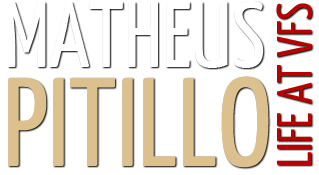
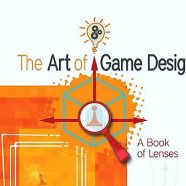





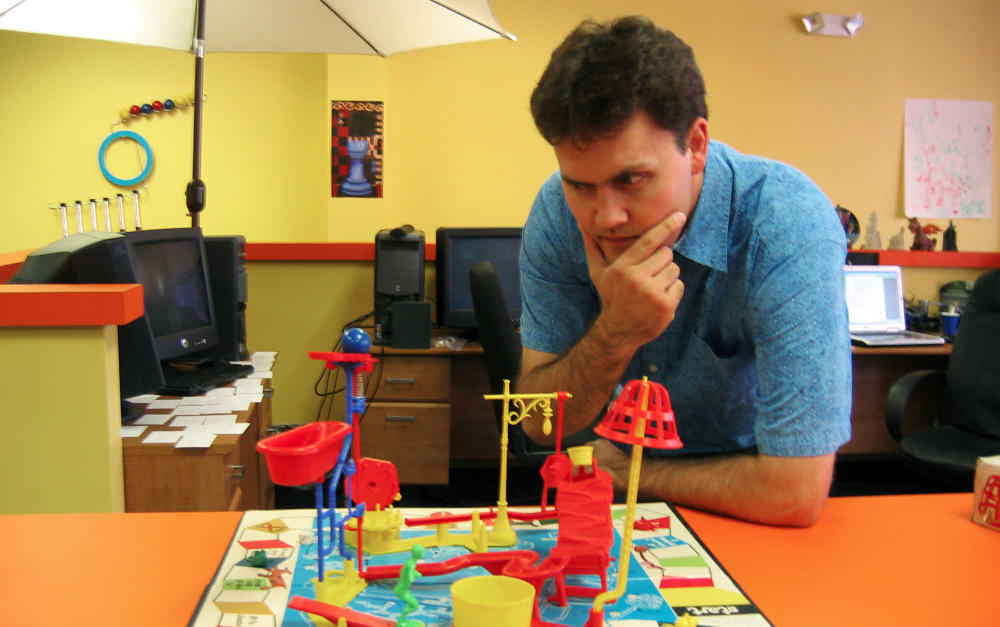
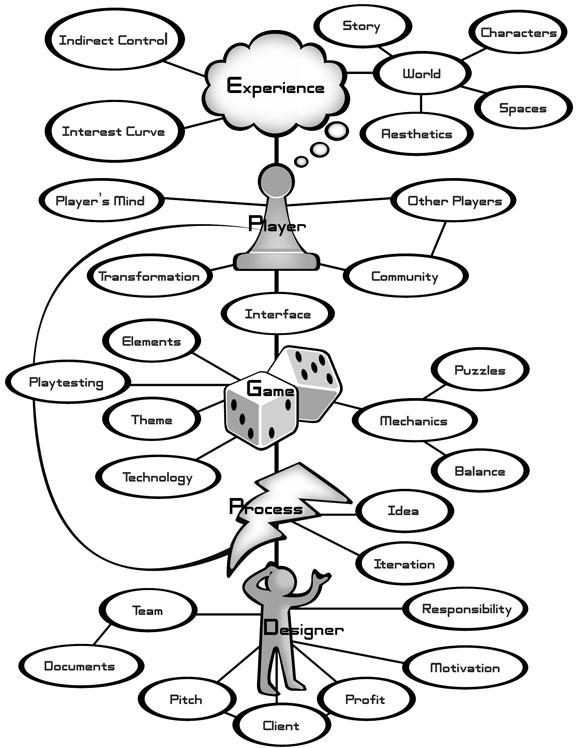
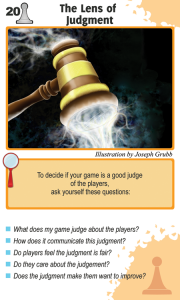
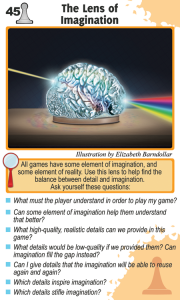
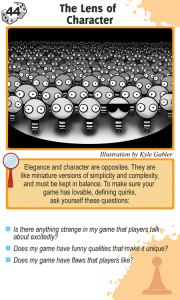
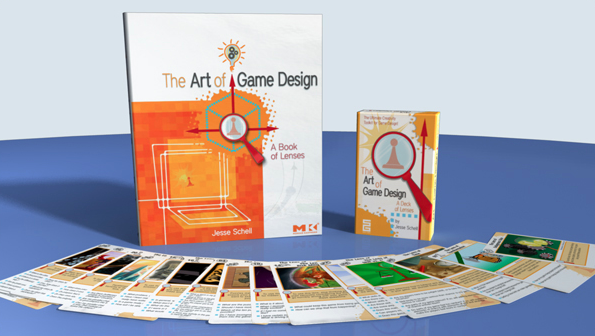
Bom review, acabei de fazer o pedido do livro.
Vlw
Ahhh! Que bom que gostou do review, cara. Tomara que voce curta muito o livro tambem. Eu particularmente achei demais. Eh engracado que a maioria das pessoas que comentam aqui se chamam Thiago. Serio mesmo! HAHAHAHA. Enfim, valeu pelo comment. Abracao! 😀
Outstanding post, you have pointed out some great points, I likewise conceive this is a very fantastic website.